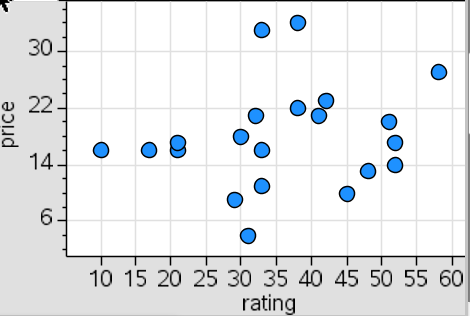Understanding
Scatter plots reveal possible associations between paired observations.
What to look for
Students can highlight the locations of subgroups of the population within the scatter plot to understand how they compare with regard to one or both of the variables in a scatter plot.Sample Assessment
A scatter plot of paired measurement variables can often be described in terms of clusters, gaps, and unusual data points.

a) Estimate the highest rating for any of the brands.
Answer: 57 or 58
b) Would you buy the brand represented by (31, 4) or the one by (32, 34)? Explain your answer.
Answer: The two brands have almost the same rating but one costs $4 and the other $34, so I would buy the cheaper one.
c) If you were willing to pay about $15 for the tool, what brand would you look for?
Answer: a brand with rating greater than 50




